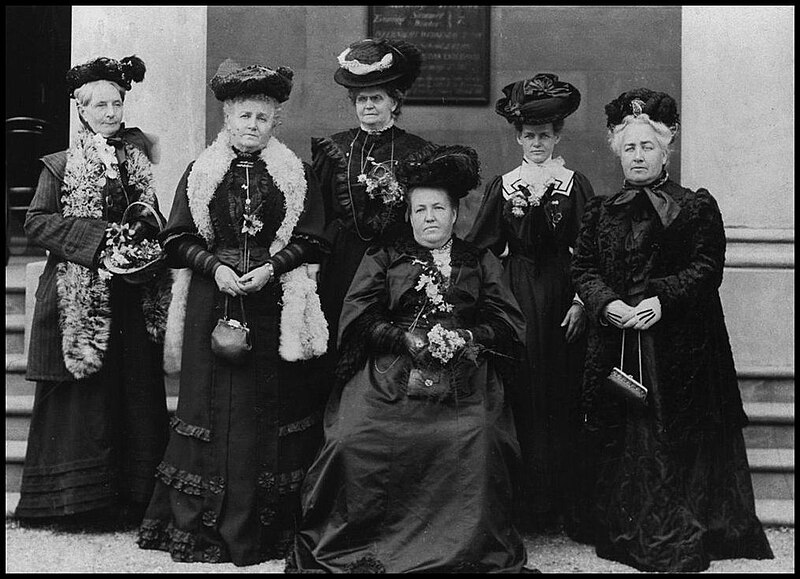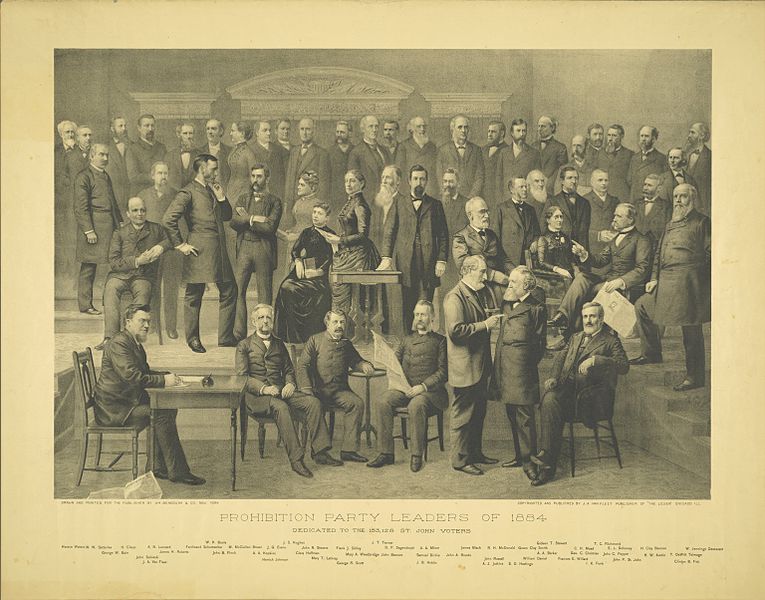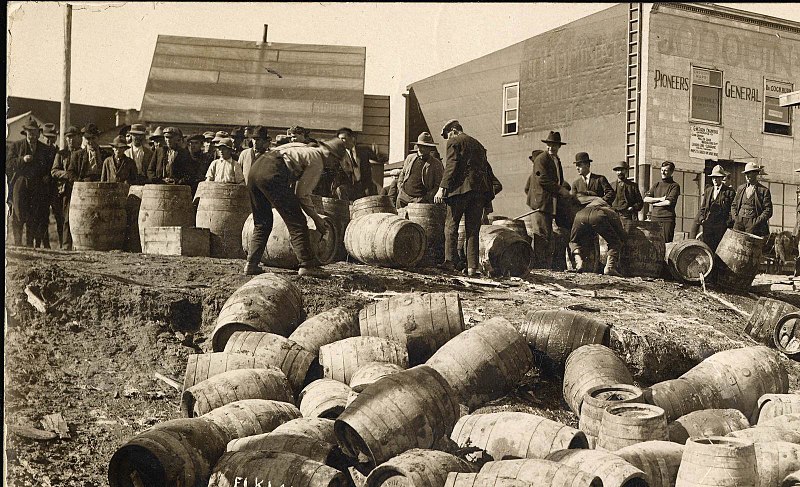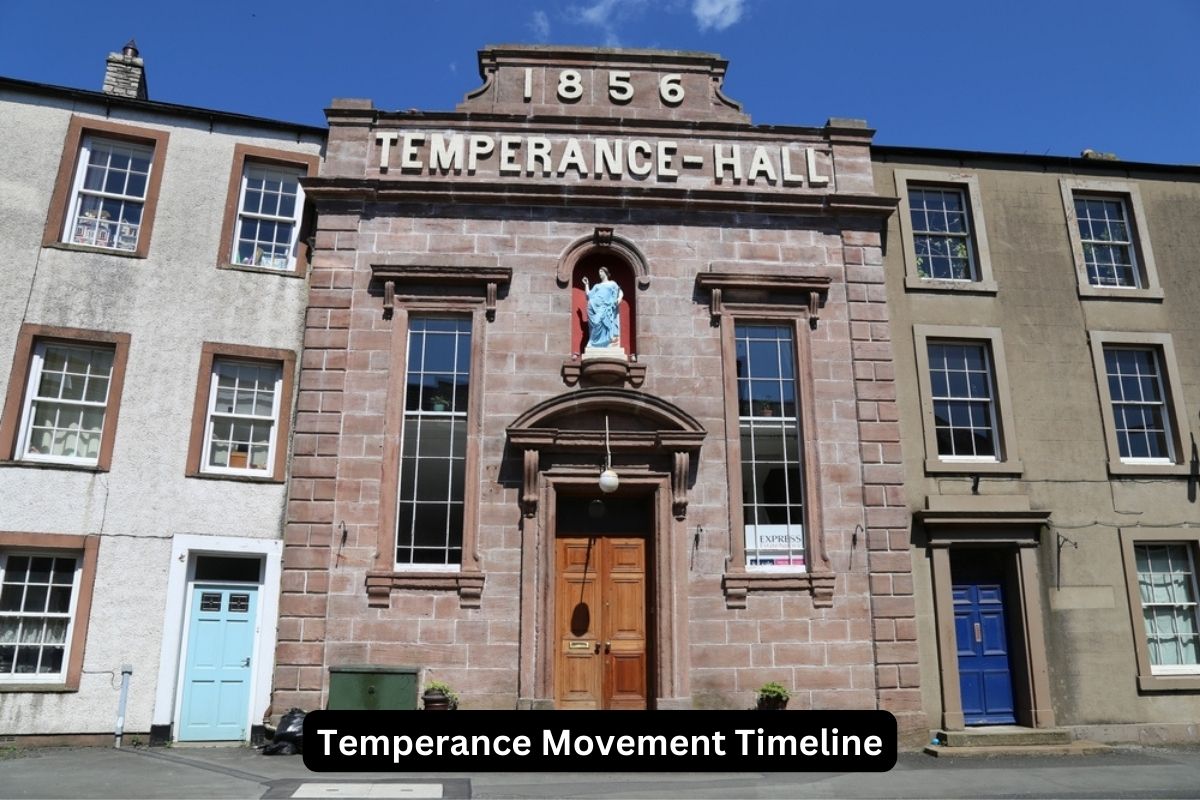The Temperance Movement, spanning over a century, profoundly influenced American society by advocating for moderation and, ultimately, complete alcohol prohibition.
This article explores its key moments, including the rise of influential organizations like the Women’s Christian Temperance Union (WCTU), the Prohibition era, and its lasting impact on alcohol awareness and education.
| Year | Event |
|---|---|
| Late 18th century | Early Temperance Societies form in the US and Europe, promoting moderation in alcohol consumption. |
| 1826 | The American Temperance Society is founded in Boston, Massachusetts. |
| 1830s | The Temperance Movement gains momentum with the formation of many local temperance organizations. |
| 1846 | Maine Law (Maine Liquor Law) is passed, prohibiting the sale of alcoholic beverages except for medicinal and mechanical purposes. |
| 1850s | The Prohibition Party is founded in the United States. |
| 1870s-1880s | The Women’s Christian Temperance Union (WCTU) is established, advocating for temperance and social reforms. |
| 1890s-1910s | The Anti-Saloon League is founded, becoming a powerful lobbying organization for alcohol prohibition. |
| 1919 | The 18th Amendment to the United States Constitution is ratified, initiating Prohibition. |
| 1920-1933 | Prohibition Era with the rise of illegal alcohol production and organized crime. |
| 1933 | The 21st Amendment to the United States Constitution is ratified, ending Prohibition. |
| 1935 | Alcoholics Anonymous (AA) is founded as a mutual support group for individuals with alcohol addiction. |
| 1950s-1960s | Modern Temperance Movement continues, advocating responsible drinking and alcohol education. |
| 1980s-Present | Various organizations and campaigns promote responsible drinking and raise awareness about alcohol consumption risks. |

Timeline of the Temperance Movement
Late 18th century: Early Temperance Societies form in the US and Europe, promoting moderation in alcohol consumption
In the late 18th century, the roots of the Temperance Movement began to take hold in both the United States and Europe.
These early temperance societies were formed in response to concerns about the excessive and often destructive consumption of alcohol in society.
Also Read: Facts About the Temperance Movement
One of the notable figures associated with this early movement was Benjamin Rush, a signer of the U.S. Declaration of Independence, who published the essay “The Effects of Ardent Spirits on the Human Mind and Body” in 1784, which argued against excessive alcohol consumption.
The societies primarily promoted moderation in alcohol consumption rather than advocating complete abstinence.

1826: The American Temperance Society is founded in Boston, Massachusetts
The Temperance Movement gained significant momentum with the establishment of the American Temperance Society in 1826.
This society was founded in Boston, Massachusetts, and its primary goal was to combat the widespread problem of alcohol abuse in American society.
The American Temperance Society promoted the idea of total abstinence from alcoholic beverages, marking a shift from the earlier emphasis on moderation.
It was one of the first national organizations dedicated to temperance and played a pivotal role in coordinating efforts across various regions of the United States.
1830s: The Temperance Movement gains momentum with the formation of many local temperance organizations
During the 1830s, the Temperance Movement experienced rapid growth and expansion, both in the United States and Europe.
Many local and regional temperance organizations began to emerge, each with its own specific focus and methods for promoting temperance.
The movement attracted individuals from various religious and social backgrounds, and it often relied on moral and religious arguments to persuade people to abstain from alcohol.
Publications, pamphlets, and speakers played a crucial role in spreading the message of temperance, and they became instrumental in shaping public opinion on the matter.
This period marked the early stages of a broader cultural shift towards questioning the role of alcohol in society and advocating for greater sobriety.

1846: Maine Law (Maine Liquor Law) is passed, prohibiting the sale of alcoholic beverages except for medicinal and mechanical purposes
In 1846, the state of Maine passed a significant piece of legislation known as the “Maine Law” or the “Maine Liquor Law.”
The Maine Law was one of the earliest and most impactful attempts to regulate and restrict the sale of alcoholic beverages in the United States.
This law prohibited the sale of alcoholic beverages for “ordinary” consumption but allowed exceptions for medicinal, mechanical, and manufacturing purposes.
The passage of the Maine Law marked a turning point in the Temperance Movement, as it represented a more aggressive approach towards controlling alcohol, moving beyond mere temperance or moderation to outright prohibition in some cases.

1850s: The Prohibition Party is founded in the United States
The 1850s saw the formal establishment of the Prohibition Party in the United States.
The Prohibition Party was founded with the specific goal of advocating for the complete prohibition of alcoholic beverages.
It marked the beginning of the Temperance Movement’s involvement in the political arena, with the party running candidates in various elections and campaigning for alcohol prohibition as part of its platform.
Although the Prohibition Party did not achieve widespread electoral success, it played a role in raising awareness and pushing for prohibition legislation at the state and national levels.
1870s-1880s: The Women’s Christian Temperance Union (WCTU) is established, advocating for temperance and social reforms
The Women’s Christian Temperance Union (WCTU) was established during the 1870s and 1880s and became one of the most influential organizations within the Temperance Movement.
Led primarily by women, the WCTU advocated for temperance, social reform, and women’s suffrage.
The WCTU’s approach was often moral and religious, and it emphasized the negative social and family consequences of alcohol abuse.

Under the leadership of figures like Frances Willard, the WCTU grew rapidly, becoming a powerful force in the fight against alcohol consumption.
The organization also played a significant role in the broader women’s suffrage movement, as many of its members recognized that achieving the right to vote could help further their temperance and social reform goals.
1890s-1910s: The Anti-Saloon League is founded, becoming a powerful lobbying organization for alcohol prohibition
The Anti-Saloon League was founded in the United States during the late 19th century, particularly gaining prominence in the 1890s and early 1900s.
This organization became one of the most influential and effective advocacy groups within the Temperance Movement.
The Anti-Saloon League’s primary goal was to promote the complete prohibition of alcoholic beverages. It adopted a no-compromise stance, advocating for the closure of all saloons and bars.
The league was known for its effective lobbying efforts at the state and federal levels, pressuring politicians to support anti-alcohol legislation.
It played a pivotal role in the eventual ratification of the 18th Amendment to the United States Constitution, which instituted nationwide Prohibition in 1919.
1919: The 18th Amendment to the United States Constitution is ratified, initiating Prohibition
The year 1919 marked a significant milestone in the Temperance Movement when the 18th Amendment to the United States Constitution was ratified.
The 18th Amendment prohibited the manufacture, sale, and transportation of alcoholic beverages within the United States.
This constitutional amendment was a culmination of decades of efforts by various temperance organizations, including the Anti-Saloon League and the Women’s Christian Temperance Union.
The era following the ratification of the 18th Amendment is often referred to as the “Prohibition Era,” during which the production and distribution of alcoholic beverages went underground, giving rise to speakeasies and organized crime.

1920-1933: Prohibition Era with the rise of illegal alcohol production and organized crime
The Prohibition Era, which lasted from 1920 to 1933, was characterized by the nationwide ban on the sale of alcoholic beverages due to the 18th Amendment.
During this period, the production and distribution of alcohol continued, but it was largely conducted illegally.
Speakeasies, secret bars, and underground clubs proliferated as people sought ways to access alcohol.
Organized crime syndicates, such as those led by figures like Al Capone, profited immensely from illegal alcohol trade.
Despite the intention to reduce alcohol consumption, Prohibition often had unintended consequences, including increased crime and a loss of government revenue.
1933: The 21st Amendment to the United States Constitution is ratified, ending Prohibition
In 1933, the 21st Amendment to the United States Constitution was ratified, effectively repealing the 18th Amendment and bringing an end to Prohibition.
The 21st Amendment granted states the authority to regulate the sale and distribution of alcohol, effectively leaving alcohol policy decisions to individual states.
The repeal of Prohibition was influenced by various factors, including the economic impact of lost tax revenue during the Great Depression and the recognition that Prohibition had failed to eliminate alcohol consumption.
The repeal of Prohibition marked the return of legal alcohol production, sale, and consumption in the United States, and it was celebrated widely as the end of a controversial social experiment.
1935: Alcoholics Anonymous (AA) is founded as a mutual support group for individuals with alcohol addiction
In 1935, Alcoholics Anonymous (AA) was founded by Bill Wilson and Dr. Bob Smith in Akron, Ohio.
AA is a mutual support group and a twelve-step program designed to help individuals struggling with alcohol addiction achieve and maintain sobriety.
The organization’s approach is based on principles of self-help, spirituality, and group support. Members share their experiences, provide encouragement, and work through a series of steps aimed at recovery and personal growth.
AA’s emphasis on anonymity and a non-judgmental environment has made it a widely recognized and respected resource for individuals seeking recovery from alcoholism.
Over the years, AA has expanded globally and played a significant role in helping millions of people overcome alcohol addiction.
1950s-1960s: Modern Temperance Movement continues, advocating responsible drinking and alcohol education
Following the repeal of Prohibition, the Temperance Movement underwent a transformation.
While the Prohibition era had ended, various organizations continued to advocate for responsible drinking and raised awareness about the potential risks associated with alcohol consumption.
This modern temperance movement focused on public education campaigns, promoting moderation, and addressing issues related to alcohol abuse, such as drunk driving.
Organizations like Mothers Against Drunk Driving (MADD), founded in 1980, gained prominence and worked to combat drunk driving and alcohol-related accidents.
Government agencies and health organizations also played a role in promoting responsible drinking and providing information about alcohol’s health effects.
1980s-Present: Various organizations and campaigns promote responsible drinking and raise awareness about alcohol consumption risks
From the 1980s to the present day, various organizations and initiatives have continued to promote alcohol awareness and education.
Campaigns and programs have aimed to reduce underage drinking, prevent alcohol-related accidents and injuries, and encourage responsible consumption.
Public health organizations have conducted research on the effects of alcohol on health and developed guidelines for safe drinking.
Efforts to reduce the stigma surrounding alcoholism and addiction have grown, emphasizing the importance of seeking help and support for those struggling with alcohol-related issues.
Technology has also played a role in alcohol education, with websites, apps, and social media platforms providing resources and information on responsible drinking.
